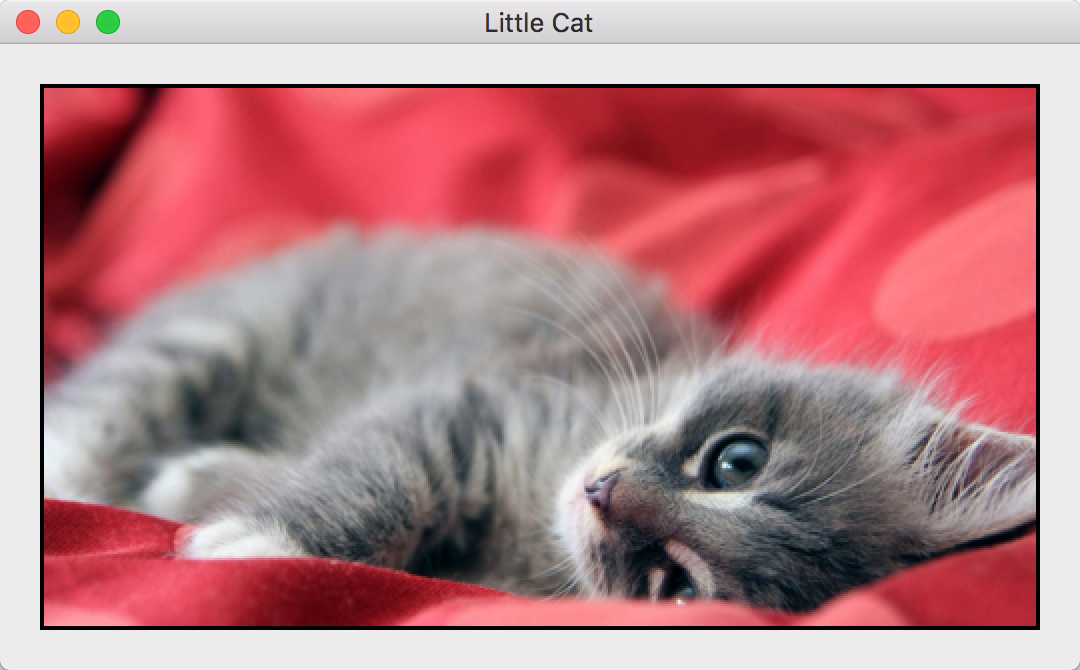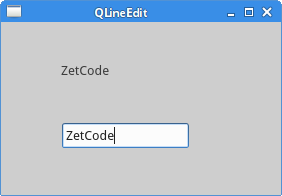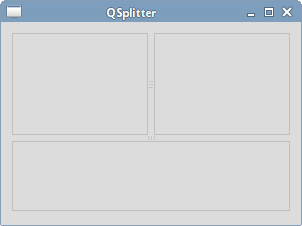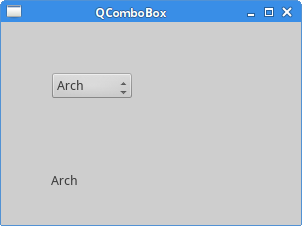控件2
本章我们继续介绍PyQt5控件。这次的有QPixmap,QLineEdit,QSplitter,和QComboBox。
图片

QPixmap是处理图片的组件。本例中,我们使用QPixmap在窗口里显示一张图片。 #!/usr/bin/python3 # -*- coding: utf-8 -*- """ ZetCode PyQt5 tutorial In this example, we dispay an image on the window. Author: Jan Bodnar Website: zetcode.com Last edited: August 2017 """ from PyQt5.QtWidgets import (QWidget, QHBoxLayout, QLabel, QApplication) from PyQt5.QtGui import QPixmap import sys class Example(QWidget): def __init__(self): super().__init__() self.initUI() def initUI(self): hbox = QHBoxLayout(self) pixmap = QPixmap("redrock.png") lbl = QLabel(self) lbl.setPixmap(pixmap) hbox.addWidget(lbl) self.setLayout(hbox) self.move(300, 200) self.setWindowTitle('Red Rock') self.show() if __name__ == '__main__': app = QApplication(sys.argv) ex = Example() sys.exit(app.exec_()) pixmap = QPixmap("redrock.png")
创建一个QPixmap对象,接收一个文件作为参数。
lbl = QLabel(self)
lbl.setPixmap(pixmap)
把QPixmap实例放到QLabel组件里。
程序展示:

行编辑
QLineEdit组件提供了编辑文本的功能,自带了撤销、重做、剪切、粘贴、拖拽等功能。

#!/usr/bin/python3 # -*- coding: utf-8 -*- """ ZetCode PyQt5 tutorial This example shows text which is entered in a QLineEdit in a QLabel widget. Author: Jan Bodnar Website: zetcode.com Last edited: August 2017 """ import sys from PyQt5.QtWidgets import (QWidget, QLabel, QLineEdit, QApplication) class Example(QWidget): def __init__(self): super().__init__() self.initUI() def initUI(self): self.lbl = QLabel(self) qle = QLineEdit(self) qle.move(60, 100) self.lbl.move(60, 40) qle.textChanged[str].connect(self.onChanged) self.setGeometry(300, 300, 280, 170) self.setWindowTitle('QLineEdit') self.show() def onChanged(self, text): self.lbl.setText(text) self.lbl.adjustSize() if __name__ == '__main__': app = QApplication(sys.argv) ex = Example() sys.exit(app.exec_())
例子中展示了一个编辑组件和一个标签,我们在输入框里键入的文本,会立即在标签里显示出来。
qle = QLineEdit(self)
创建一个QLineEdit对象。
qle.textChanged[str].connect(self.onChanged)
如果输入框的值有变化,就调用onChanged()方法。
def onChanged(self, text): self.lbl.setText(text) self.lbl.adjustSize()
在onChanged()方法内部,我们把文本框里的值赋值给了标签组件,然后调用adjustSize()方法让标签自适应文本内容。
程序展示:

QSplitter
QSplitter组件能让用户通过拖拽分割线的方式改变子窗口大小的组件。本例中我们展示用两个分割线隔开的三个QFrame组件。

#!/usr/bin/python3 # -*- coding: utf-8 -*- """ ZetCode PyQt5 tutorial This example shows how to use QSplitter widget. Author: Jan Bodnar Website: zetcode.com Last edited: August 2017 """ from PyQt5.QtWidgets import (QWidget, QHBoxLayout, QFrame, QSplitter, QStyleFactory, QApplication) from PyQt5.QtCore import Qt import sys class Example(QWidget): def __init__(self): super().__init__() self.initUI() def initUI(self): hbox = QHBoxLayout(self) topleft = QFrame(self) topleft.setFrameShape(QFrame.StyledPanel) topright = QFrame(self) topright.setFrameShape(QFrame.StyledPanel) bottom = QFrame(self) bottom.setFrameShape(QFrame.StyledPanel) splitter1 = QSplitter(Qt.Horizontal) splitter1.addWidget(topleft) splitter1.addWidget(topright) splitter2 = QSplitter(Qt.Vertical) splitter2.addWidget(splitter1) splitter2.addWidget(bottom) hbox.addWidget(splitter2) self.setLayout(hbox) self.setGeometry(300, 300, 300, 200) self.setWindowTitle('QSplitter') self.show() def onChanged(self, text): self.lbl.setText(text) self.lbl.adjustSize() if __name__ == '__main__': app = QApplication(sys.argv) ex = Example() sys.exit(app.exec_())
三个窗口和两个分割线的布局创建完成了,但是要注意,有些主题下,分割线的显示效果不太好。
topleft = QFrame(self)
topleft.setFrameShape(QFrame.StyledPanel)
为了更清楚的看到分割线,我们使用了设置好的子窗口样式。
splitter1 = QSplitter(Qt.Horizontal)
splitter1.addWidget(topleft)
splitter1.addWidget(topright)
创建一个QSplitter组件,并在里面添加了两个框架。
splitter2 = QSplitter(Qt.Vertical)
splitter2.addWidget(splitter1)
也可以在分割线里面再进行分割。
程序展示:

下拉选框
QComboBox组件能让用户在多个选择项中选择一个。

#!/usr/bin/python3 # -*- coding: utf-8 -*- """ ZetCode PyQt5 tutorial This example shows how to use a QComboBox widget. Author: Jan Bodnar Website: zetcode.com Last edited: August 2017 """ from PyQt5.QtWidgets import (QWidget, QLabel, QComboBox, QApplication) import sys class Example(QWidget): def __init__(self): super().__init__() self.initUI() def initUI(self): self.lbl = QLabel("Ubuntu", self) combo = QComboBox(self) combo.addItem("Ubuntu") combo.addItem("Mandriva") combo.addItem("Fedora") combo.addItem("Arch") combo.addItem("Gentoo") combo.move(50, 50) self.lbl.move(50, 150) combo.activated[str].connect(self.onActivated) self.setGeometry(300, 300, 300, 200) self.setWindowTitle('QComboBox') self.show() def onActivated(self, text): self.lbl.setText(text) self.lbl.adjustSize() if __name__ == '__main__': app = QApplication(sys.argv) ex = Example() sys.exit(app.exec_())
本例包含了一个QComboBox和一个QLabel。下拉选择框有五个选项,都是Linux的发行版名称,标签内容为选定的发行版名称。
combo = QComboBox(self) combo.addItem("Ubuntu") combo.addItem("Mandriva") combo.addItem("Fedora") combo.addItem("Arch") combo.addItem("Gentoo")
创建一个QComboBox组件和五个选项。
combo.activated[str].connect(self.onActivated)
在选中的条目上调用onActivated()方法。
def onActivated(self, text): self.lbl.setText(text) self.lbl.adjustSize()
在方法内部,设置标签内容为选定的字符串,然后设置自适应文本大小。
程序展示:

